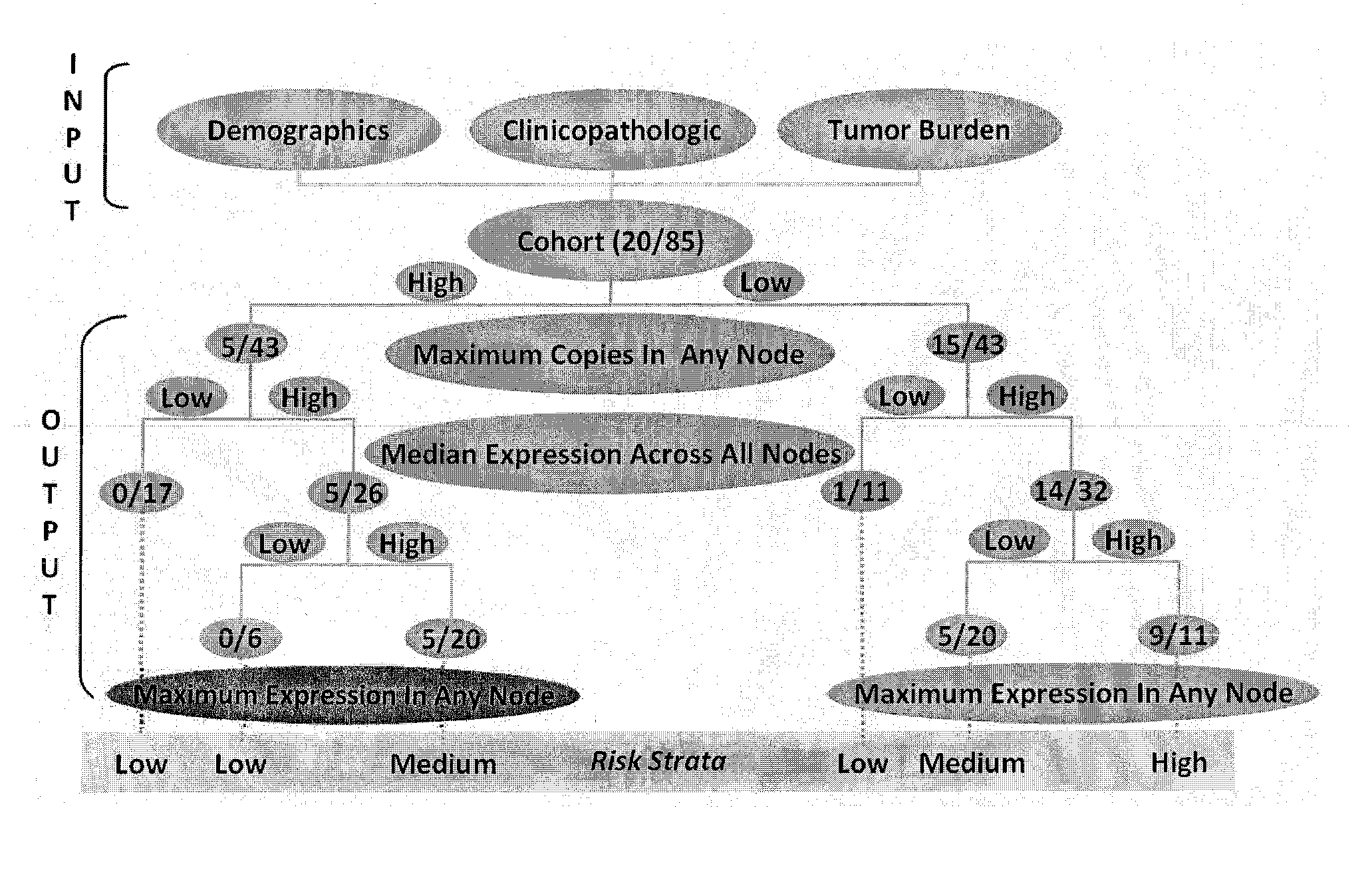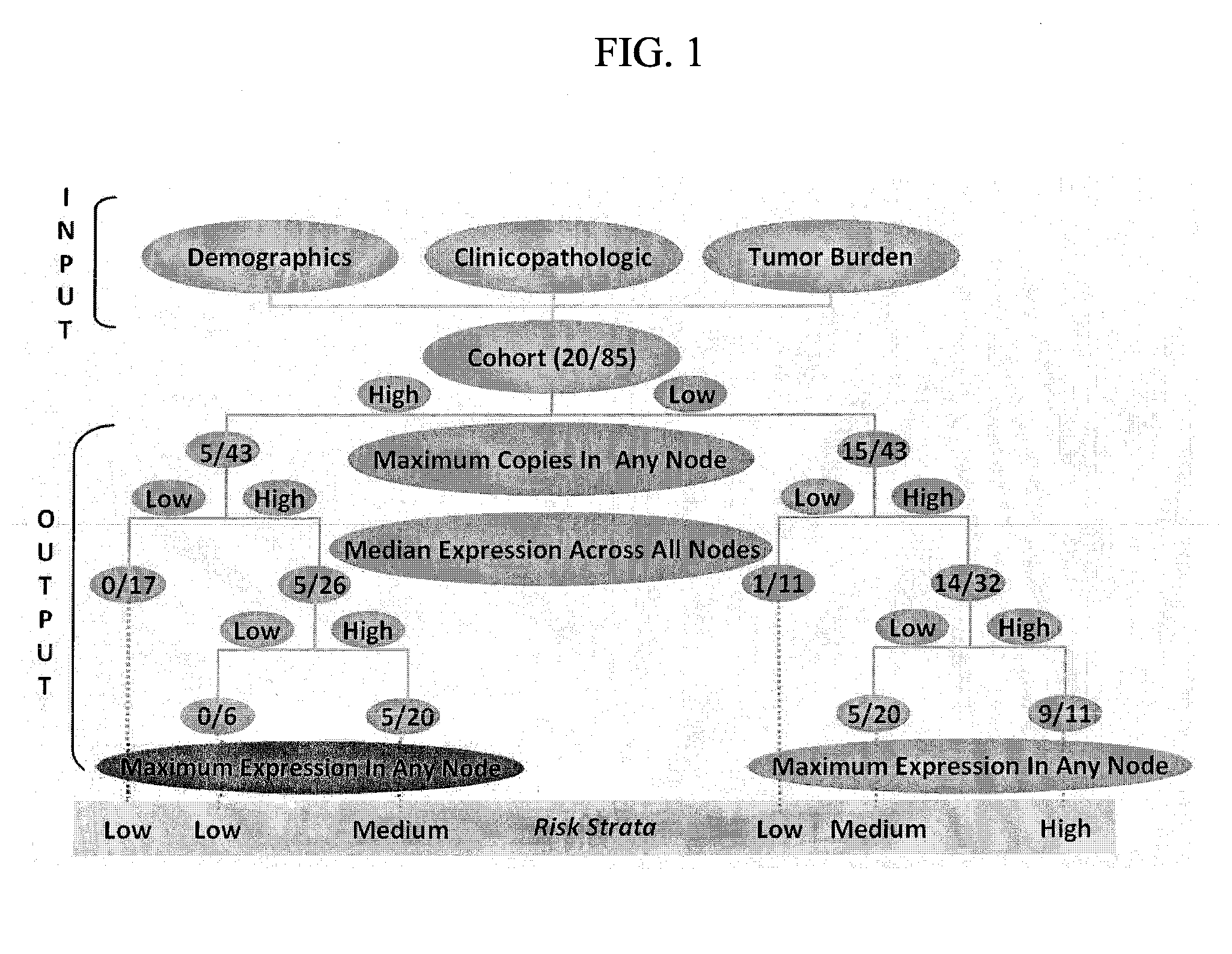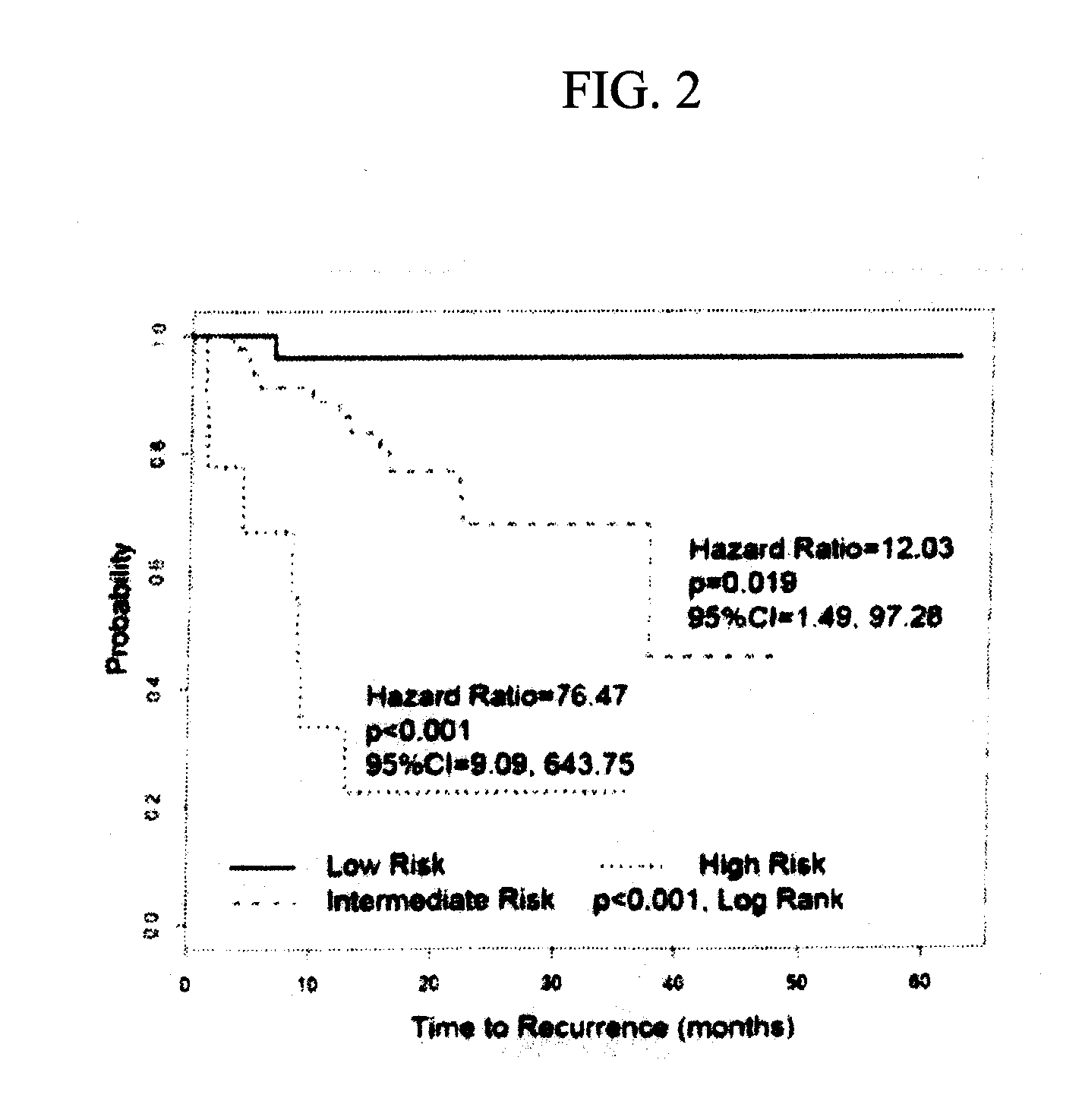System for and method of determining cancer prognosis and predicting response to therapy
a cancer prognosis and prognosis technology, applied in the field of system and method of predicting cancer prognosis and responding to therapy, can solve the problem that patients deemed pn0 face a statistical risk of recurren
- Summary
- Abstract
- Description
- Claims
- Application Information
AI Technical Summary
Benefits of technology
Problems solved by technology
Method used
Image
Examples
example 1
[0078]Although ostensibly rendered tumor-free by surgery, ˜25% of patients with lymph nodes devoid of colorectal cancer by histopathology (pN0) suffer recurrence, suggesting the presence of occult metastases. GUCY2C, an intestinal tumor suppressor universally silenced in neoplasia, is a mechanism-based biomarker for metastatic colorectal cancer cells. Here, we explored the novel hypothesis that occult tumor burden, in which the amount of molecular metastases was estimated by GUCY2C quantitative RT-PCR (qRT-PCR), establishes prognostic risk to accurately stage pN0 patients. We demonstrate for the first time that occult tumor burden assessed across the regional lymph node network is a powerful independent prognostic marker of time to recurrence and disease-free survival in pN0 patients. This approach can improve prognostic risk stratification and chemotherapeutic allocation in pN0 patients. More generally, this study reveals a previously unappreciated paradigm to advance cancer stagin...
example 2
[0088]The present analysis defines the association between occult tumor burden in lymph nodes, estimated by GUCY2C qRT-PCR, and time to recurrence and disease-free survival in patients with pN0 colorectal cancer.
[0089]Lymph node involvement by histopathology informs colorectal cancer prognosis, whereas recurrence in 25% of node-negative patients suggests the presence of occult metastasis. GUCY2C (guanylyl cyclase C) is a marker of colorectal cancer cells that identifies occult nodal metastases associated with recurrence risk. Here, the association of occult tumor burden, quantified by GUCY2C reverse transcriptase-PCR (RT-PCR), with outcomes in colorectal cancer is defined.
[0090]Lymph nodes (range: 2-159) from 291 prospectively enrolled node-negative colorectal cancer patients were analyzed by histopathology and GUCY2C quantitative RT-PCR. Participants were followed for a median of 24 months (range: 2-63). Time to recurrence and disease-free survival served as primary and secondary o...
example 3
[0127]There is an ever-widening racial gap in mortality from colorectal cancer, the 4th most common incident cancer and the 2nd leading cause of cancer death in the U.S. For example, while disease-specific mortality has decreased 54% for non-Hispanic white (white) men, non-Hispanic black (black) men have experienced an increase of 28%, since 1960. Racial differences in mortality reflect tumor clinicopathologic characteristics, including advanced stage of disease at diagnosis associated with poorer outcomes in black, compared to white, patients. In turn, differences in disease stage at diagnosis reflect disparities in socioeconomic status and access to quality health service. However, tumor characteristics, socioeconomic status and health services access contribute only about 50% to excess mortality reflecting race. Other factors underlying race-based excess mortality in colorectal cancer remain undefined.
[0128]Beyond clinicopathological differences at diagnosis, there is an under-ap...
PUM
| Property | Measurement | Unit |
|---|---|---|
| pH | aaaaa | aaaaa |
| nucleic acid detection | aaaaa | aaaaa |
| Northern blots | aaaaa | aaaaa |
Abstract
Description
Claims
Application Information
 Login to View More
Login to View More - R&D
- Intellectual Property
- Life Sciences
- Materials
- Tech Scout
- Unparalleled Data Quality
- Higher Quality Content
- 60% Fewer Hallucinations
Browse by: Latest US Patents, China's latest patents, Technical Efficacy Thesaurus, Application Domain, Technology Topic, Popular Technical Reports.
© 2025 PatSnap. All rights reserved.Legal|Privacy policy|Modern Slavery Act Transparency Statement|Sitemap|About US| Contact US: help@patsnap.com



